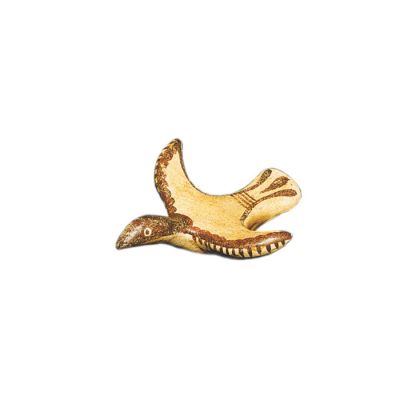Minoan Neopalacial Pigeon. Kids' toys played an important role from the ancient time. They helped children overcome difficulties, but also to have fun. The ancient Greeks believed that games played an important role in fostering a child. That is why the games were included in their training program.
Handmade clay with decoration.
Height: 7 cm
All prices include VAT.
The first species of pigeons appeared in our culture 3,000 years ago, in ancient Egypt and ancient Greece. One of the first birds thatthe man gοt close to. The main symbolism of the pigeon is peace.
Part of this symbolism comes from the Old Testament, namely the Noah Flood at the end of which Noah sent two pigeons to see if there is land. The pigeons returned by holding an olive branch, pointing symbolically that God stopped the "war" against mankind. The pigeon also symbolizes innocence and purity. In the Christian religion it constitutes the symbol of the Holy Spirit (from the description of the baptism of Jesus).
Astarti, the Goddess of Love and Fertility, had the pigeon as a sacred bird. In ancient Greece, however, the pigeon was dedicated to the Goddess Aphrodite. The Romans were the first to connect the pigeon with the army and train it as a "postman". References to this use date back to the 5th century B.C. “Pigeons – postmen” were also used by the Sultans of the Crusades. The pigeon was also the "pigeon-soldier" used during the First World War.
In Minoan Crete the pigeon is depicted in a of sanctuary in Knossos, as well as in two vessels for libations from Palaikastro and Phaistos respectively. Known figurines of deities were found in domestic sanctuaries of Minoan Crete with pigeons on their heads. A typical example is the sanctuary of the double ax of Knossos, as the figurine of a goddess appears with a pigeon on the head and the figurine of a man offering a pigeon.
Clay games in Greece are exhibited at the Historical Museum of Heraklion, in the Archaeological Museum of Rethymnon in Crete, in the Archaeological Museum of Art and in the Cyprus Archaeological Museum in Lefkosia.
No posts found






